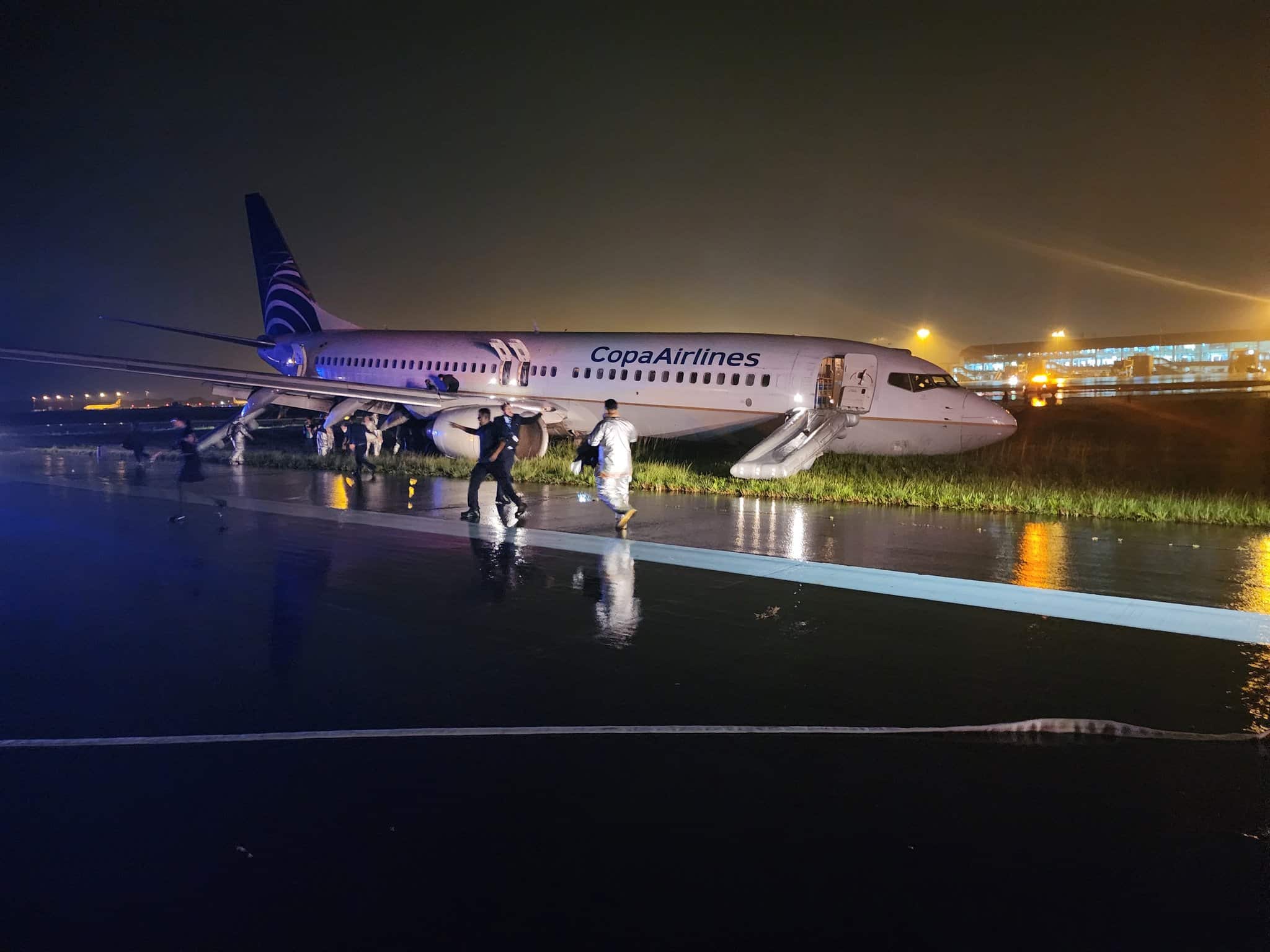Aerospace
BREAKING : Copa Airlines Boeing 737-800 runway excursion in Panama
Copa Airlines Boeing 737-800 runway excursion in Panama #COPAAIRLINE #RUNWAY

On Sunday evening, a Copa airplane took off from the Tocumen airport’s runway. The occurrence generated a great deal of worry in the crew and passengers, who were forced to leave the aircraft using the emergency exits, which were situated on the plane’s wings, as seen in the pictures.
After the aircraft left the runway upon landing, the slides and emergency exits of the Boeing with the registration HP-1539 belonging to Copa Airlines had to be opened.
Copa Airlines Boeing 737-800 (HP-1539CMP, built 2010) suffered a runway excursion on landing runway 03R at Panama City-Tocumen AP (MPTO), Panama coming to rest on soft ground. Flight #CM135 from Mexico City was evacuated. No injuries reported.@criticaenlinea pic.twitter.com/FWTLIegpTW
— JACDEC (@JacdecNew) September 26, 2022
A Red Air MD-82 crashed and caught fire at Miami International Airport.(Opens in a new browser tab)
Travelers this time had to put the rescue protocol, which is required to be given to passengers before each flight, into action. They were forced to use the emergency exits and take additional security precautions.
According to Copa, “Our priority is the safety of the passengers and employees on board the flight, thus we will give them the help that is required.”
Here’s Why A Toilet Is Hanging On A Navy F/A-18 Super Hornet’s Wing(Opens in a new browser tab)
When the Boeing 737-800NG airplane with the registration number HP-1539 touched down, the incident happened. At precisely 5:26 p.m. on Sunday, September 25, it had departed the Benito Juárez airport in Mexico, heading toward Panama.
After the move, no injuries were reported. Both the causes of the incident and any potential damage to the aircraft are presently being assessed.
Una más para el anecdotario. Vuelo CM135 CopaAirlines. Al aterrizar nos salimos de la pista y terminamos a lado en el lodo. Salimos por los toboganes. pic.twitter.com/Ov5yU94Uwm
— Pablo Corona Fraga (@pcoronaf) September 26, 2022

Aerospace
Boeing Transfers Rocket Stage to NASA, Paving Way for Human Moon Mission

Boeing has achieved a significant milestone by providing NASA with the second core stage of the Space Launch System (SLS) rocket.
This crucial component, crafted at NASA’s Michoud Assembly Facility (MAF), is set to propel the Artemis II crew into lunar orbit, marking humanity’s return to deep space after a 50-year hiatus.
The monumental Boeing-built rocket stage, the largest element of the Artemis II mission, will embark on a journey aboard the Pegasus barge, traveling 900 miles to NASA’s Kennedy Space Center.
Comparison of two legendary aircraft B777x vs B747 aircraft:Click here
Upon arrival, it will be meticulously integrated with other essential Artemis II components, including the upper stage, solid rocket boosters, and NASA’s Orion spacecraft within the iconic Vehicle Assembly Building. This intricate integration process is a vital step toward the eagerly anticipated Artemis II launch, slated for 2025.
“Boeing-built products helped land humankind on the moon in 1969, and we’re proud to continue that legacy through the Artemis generation,” remarked Dave Dutcher, vice president and program manager for Boeing’s SLS program. “Together, with NASA and our industry partners and suppliers, we are building the world’s most capable rocket and paving the way to deep space through America’s rocket factory in New Orleans.”
NASA, Lockheed Martin Reveal X-59 Quiet Supersonic Aircraft:Click here
The delivery of Core Stage 2 marks a significant achievement in the evolution of the SLS rocket. Towering over 200 feet and powered by four RS-25 engines, this core stage, coupled with two solid-fueled booster rockets, will generate a staggering 8.8 million pounds of thrust. This immense power is crucial to launching Artemis II and future missions into the vast expanse of space.
The SLS rocket stands unparalleled in its capability to transport both crew and substantial cargo to the moon and beyond in a single launch. Its extraordinary capacity will facilitate the delivery of human-rated spacecraft, habitats, and scientific missions to destinations including the moon and Mars, ushering in a new era of space exploration.
-

 Travel1 week ago
Travel1 week agoAir India to Expand US Operations with Three New Routes After a Decade
-

 Travel2 weeks ago
Travel2 weeks agoWhy We Should Avoid These Stamps in a Passport
-

 Airlines1 month ago
Airlines1 month agoInvestigations Reveal Fake Chinese Titanium in Boeing and Airbus Jets
-

 Tech4 weeks ago
Tech4 weeks agoChina’s CATL Plans 1,800-Mile Electric Plane Launch by 2027
-

 Airport3 days ago
Airport3 days agoTop 10 Largest Airports in the World by Size
-

 Aerospace4 weeks ago
Aerospace4 weeks agoChina’s Fighter Jets Turn Wings into Autonomous Drones
-

 Airlines4 days ago
Airlines4 days agoAir India Rolls Out A350s for Delhi-New York JFK and Newark Routes
-

 Defence3 weeks ago
Defence3 weeks agoBoeing Enhances Chinook with New Engines and Block II Upgrades at $96 Million







